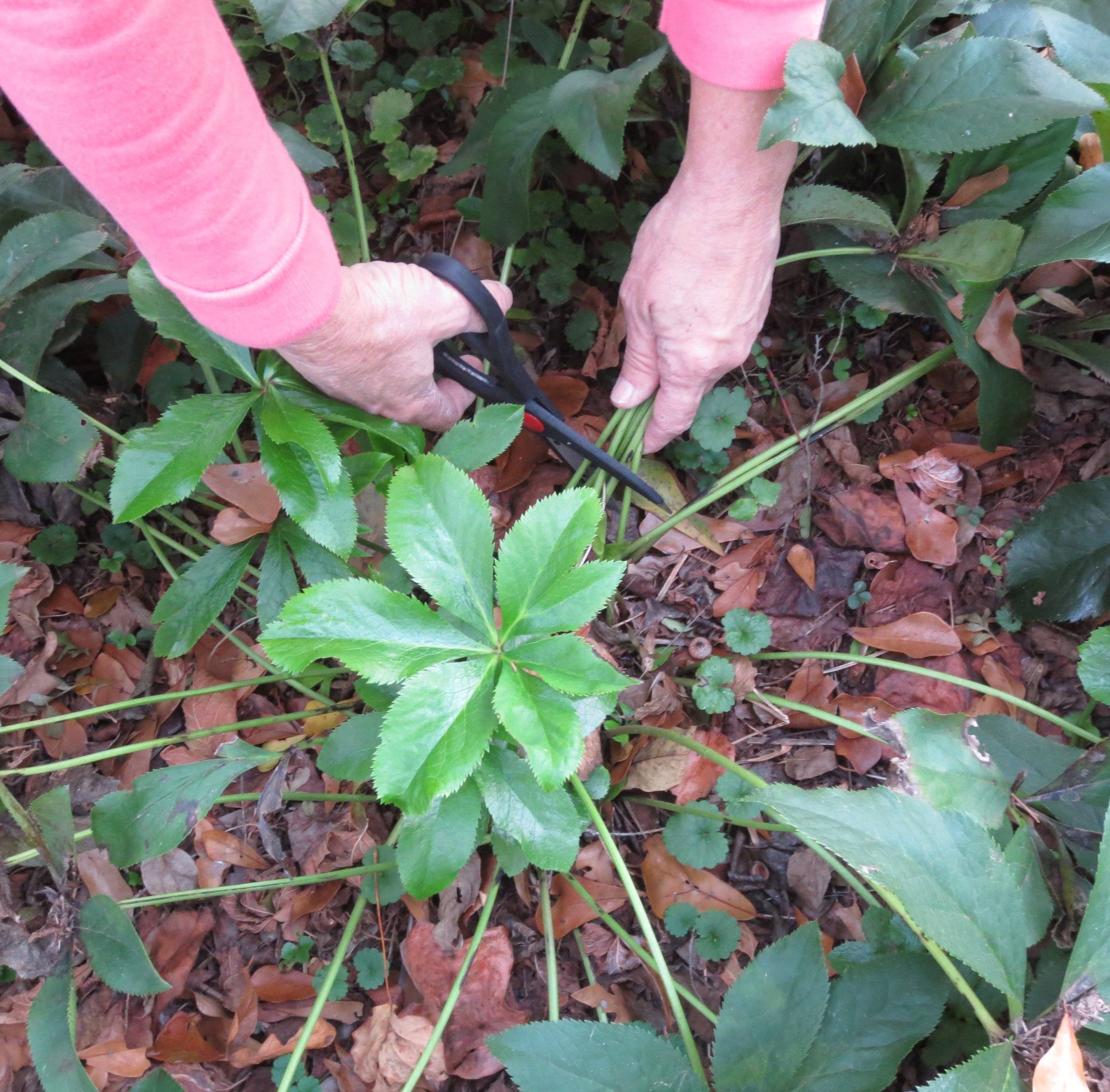Lenten Rose or Hellebore is one of the easiest, most reliable groundcovers for shade gardens and woodlands. So, I was surprised to receive three inquiries in the past month about dead or dying plants, with pinched stems and black-spotted leaves. My first guess was boggy soil. We have enjoyed plentiful rains this spring, so clay soils in poorly drained areas may be swampy enough to encourage root rot. A little more digging, though, uncovered a new, previously unknown (to me) culprit: the virus Helleborus Net Necrosis Virus (HeNNV), also known as Black Death.
The virus presents with blackened, stunted or deformed leaves and can include a strange netting pattern around the leaf veins. Young, tender growth is usually first to be affected. Stems and flowers can also show signs of the virus. One of the earliest signs is puckering of the leaf surface around the veins. Don’t confuse HeNNV with fungal diseases like Hellebore Leaf Spot, which presents with rounded red or brown spots on leaves, usually seen in autumn and treatable by removing the damaged leaves. HeNNV is viral, not treatable.
The New York Botanical Garden LuEsther T. Mertz Library has a great article on Hellebores. Here is what they say about the Net Necrosis Virus: “The black death virus has been observed in Europe since the early 1990’s. Studies of the disease by Washington State University, examining strains found in the United States, determined that this disease is a Carlavirus, a group of viruses transmitted by insects for which plants serve as hosts and distinct from any previously encountered viruses. The insect vector for this disease has been assessed to be the hellebore aphid, which proliferates on hellebores. Not all aphid species are able to transmit all viruses and other aphid species have not yet been demonstrated to transmit this disease. It is believed to be carried on the feeding parts (stylets) of aphids but is not internalized (non-persistent transmission), thus the disease is carried for a period no longer than a few minutes.
Because the virus is transmitted on the feeding parts of aphids, preventing feeding is the most promising management technique in nursery greenhouse settings. There are systemic insecticides that are licensed for these settings in some states. Use of insecticides on home gardens to deter aphids, however, would not be effective or practical as a very short-interval repeat of application in an open environment would be needed.” A photo of a virus-stricken plant is included with the article.
Strong-growing plants may show more resistance to the virus. Humus-rich, well-drained soil and good air circulation help keep plants healthy. I have read that a fertilizer heavy in potash, applied once or twice a year, will help keep Lenten Rose a rich, healthy green. I have not tested that myself nor have I read university research on this topic, so consider that as “maybe” information only. Potash is the K in NPK on fertilizer bags. Many fertilizers that are labeled specifically for tomatoes contain an elevated amount.
What do you do if you spot a troubled plant in your own garden? Dig it up, bag it, and send it out with the trash. Do not add diseased plants to the compost pile. If you catch the problem early, you may be able to prevent its spread to surrounding Hellebores.
Thus far, I have only developed one suggested alternative plant as a Hellebore replacement. That plant is Evergreen Solomon’s Seal, Disporopsis pernyi. Hardy in zones 6-9, it has arching stems that resemble a very short Leucothoe. It has tiny fragrant flowers in spring, spreads rapidly, and is deer resistant. While they are both in the Asparagaceae family, Evergreen Solomon’s Seal is not in the Polygonatum genus of deciduous Solomon’s Seals. If evergreen foliage is not important to you and your garden, please also consider Polygonatum humile, Dwarf Solomon’s Seal. It reaches nine inches in height and makes a lush groundcover in woodland areas, hardy in zones 5-9. I have ruled out Pachysandra as a good replacement (too slow, too temperamental) but Sweet Woodruff, Galium odoratum, is still under consideration.
Winter sun backlights this healthy Hellebore.



